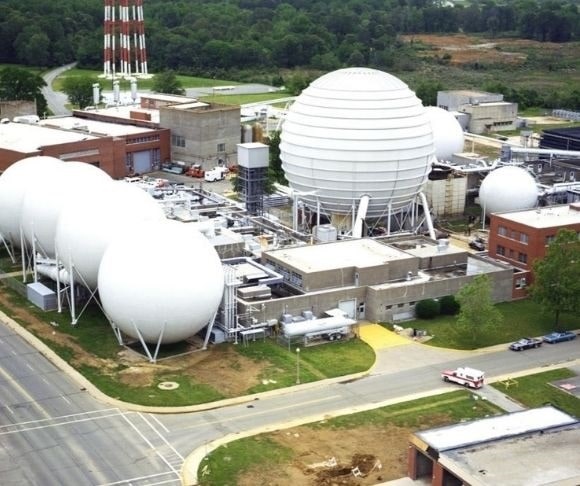The menace of hypersonic weapons has been one of the most talked-about threats to the U.S. military and homeland in the last several years. As Liberty Nation reported, a Chinese test in August of last year caught the U.S. intelligence community by surprise and caused a flurry of commentary by defense pundits. In an exclusive conversation, Mr. Frank Cappuccio, former executive vice president for Lockheed Martin’s Advanced Development Programs, offered LN some insight on several questions. Is hypersonic technology just hype? Is the case today for developing and fielding America’s own high-speed systems still as compelling, or is the U.S. too late? As an alternative, might fielding a robust defensive system be more cost-effective?
 Mike Griffin, former President Donald Trump’s selection as the Under Secretary of Defense for Research and Engineering, believed the need for a U.S. hypersonic missile capability was crucial. According to a Space News report, during a speech at a McAleese/Credit Suisse defense conference in Washington just ten days after taking office in March of 2018, he said unequivocally if he had to pick his number one research and development priority, this would top the list. Even then, China had completed 20 times more tests than the U.S. That was four years ago. So, the answer to the first two questions is yes, the need to have hypersonic missiles is important, and the Department of Defense is late in realizing that need.
Mike Griffin, former President Donald Trump’s selection as the Under Secretary of Defense for Research and Engineering, believed the need for a U.S. hypersonic missile capability was crucial. According to a Space News report, during a speech at a McAleese/Credit Suisse defense conference in Washington just ten days after taking office in March of 2018, he said unequivocally if he had to pick his number one research and development priority, this would top the list. Even then, China had completed 20 times more tests than the U.S. That was four years ago. So, the answer to the first two questions is yes, the need to have hypersonic missiles is important, and the Department of Defense is late in realizing that need.
Mr. Cappuccio explained, “A hypersonic weapon is a perfect weapon to intimidate and threaten peers into submission. A hypersonic weapon compresses a foe’s decision-making window.” Additionally, the former senior Lockheed executive portrayed the technology as “game-changing in that it is highly survivable, difficult to acquire and defeat due to altitude, speed, and maneuverability.” That seems a daunting challenge for the U.S. military facing such weapons.
A recent Congressional Research Service (CRS) report revealed the Defense Department has seven hypersonic research and development projects with Research, Development, Test, and Evaluation (RDT&E) funding: the Navy’s Conventional Prompt Strike, the Army’s Long-Range Hypersonic Weapon, the Air Force’s AGM-183 Air-Launched Rapid Response Weapon and Hypersonic Attack Cruise Missile, and three Defense Advanced Research Projects Agency (DARPA) projects. However, only the Air Force’s AGM-183 is expected to reach early operational capability in FY2022. More troubling, as the CRS points out, “most U.S. hypersonic weapons programs, in contrast to those in Russia and China, are not being designed for use with a nuclear warhead.” Consequently, American weapons require “greater accuracy and will be more technically challenging to develop than nuclear-armed Chinese and Russian systems.”
According to the DOD FY2022 RDT&E funding request, $3.8 billion has been budgeted for hypersonics, up from $3.2 billion in Fy2021. To use the money efficiently, rather than seven different projects, this is one time when consolidation of funding and integration of effort under a single executive agent seems prudent. Go with the system development most likely to field a weapon soonest. How about we learn a lesson from China and focus on one missile capability? As of this writing, the DOD is dithering whether even to pursue hypersonics. As the CRS report put it:
“…Principal Director for Hypersonics (office of the Under Secretary for Research and Engineering) Mike White has stated, DOD has not yet made a decision to acquire hypersonic weapons and is instead developing prototypes to assist in the evaluation of potential weapon systems concepts and mission sets.”
Such indecision smacks of bureaucratic nonsense costing $3.8 billion.
 When it comes to robust defense, the U.S. Missile Defense Agency (MDA) established the Hypersonic Defense Program in 2017, but according to the CRS, MDA requested just $248 million in FY2022, down from the appropriated amount of $270 million in FY2021. In the same CRS report, Kelley Sayler, CRS’s research analyst and author, wrote: “Hypersonic weapons could challenge detection and defense due to their speed, maneuverability and low altitude of the flight. For example, terrestrial-based radar cannot detect hypersonic weapons until late in the weapon’s flight.”
When it comes to robust defense, the U.S. Missile Defense Agency (MDA) established the Hypersonic Defense Program in 2017, but according to the CRS, MDA requested just $248 million in FY2022, down from the appropriated amount of $270 million in FY2021. In the same CRS report, Kelley Sayler, CRS’s research analyst and author, wrote: “Hypersonic weapons could challenge detection and defense due to their speed, maneuverability and low altitude of the flight. For example, terrestrial-based radar cannot detect hypersonic weapons until late in the weapon’s flight.”
Defending against these new weapons should be a priority, but the low level of funding indicates it is not. Yet, as Griffin explained, “They launch a missile costing maybe a few million dollars or even 10s of millions of dollars, and two or three of those can take out an aircraft carrier.” The latest U.S. aircraft carrier, the USS Gerald R. Ford, cost taxpayers $13 billion. The cost-benefit trade-off favors defending against high-velocity missiles.
Hypersonic weapons are a capability that the U.S. must match or counter. As Mr. Cappuccio rightly said, they are “game-changing,” and it isn’t hype. Right now, the U.S. can neither match adversaries in hypersonic missile capability nor defend effectively against such weapons.
The views expressed are those of the author and not of any other affiliation.
~ Read more from Dave Patterson.




